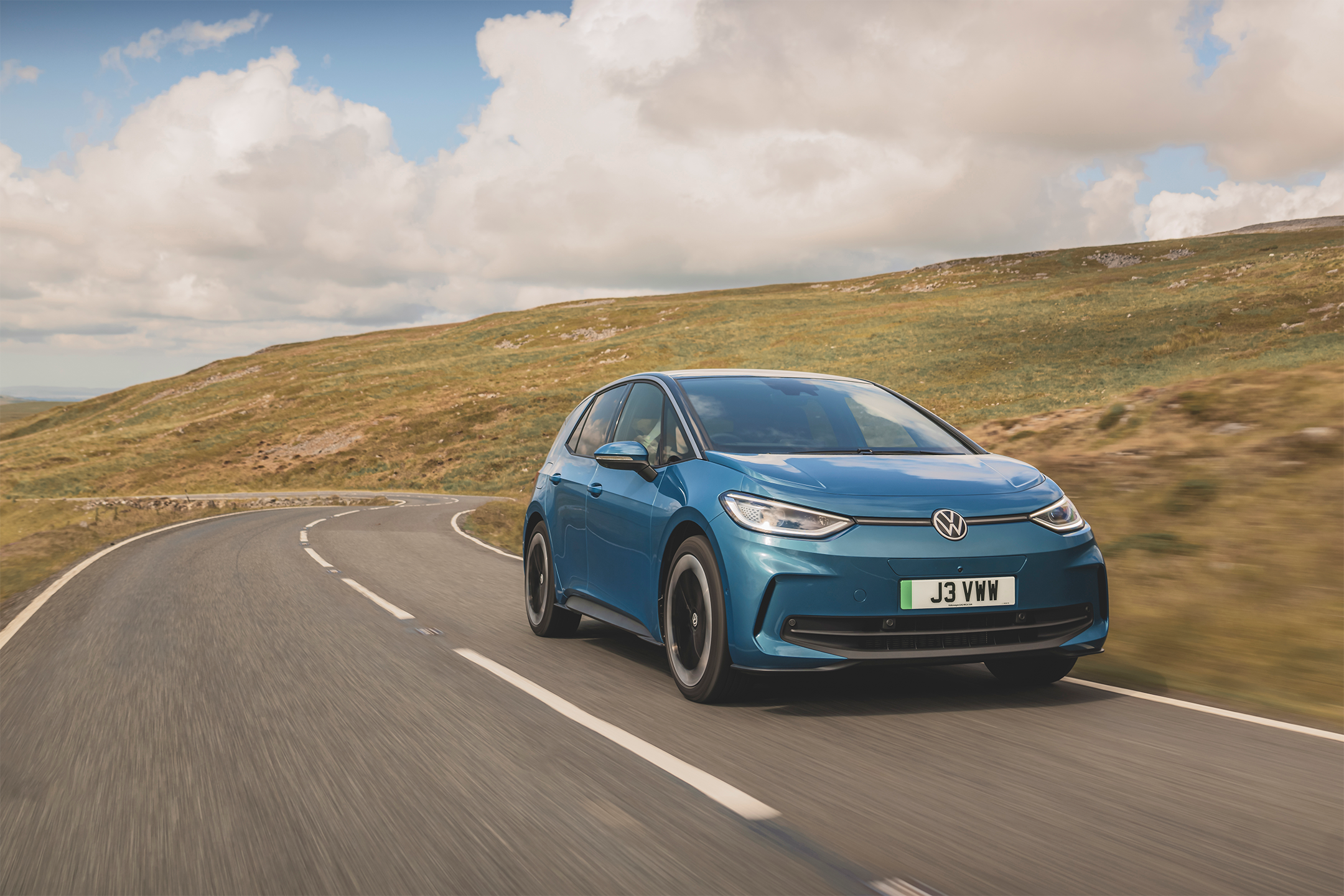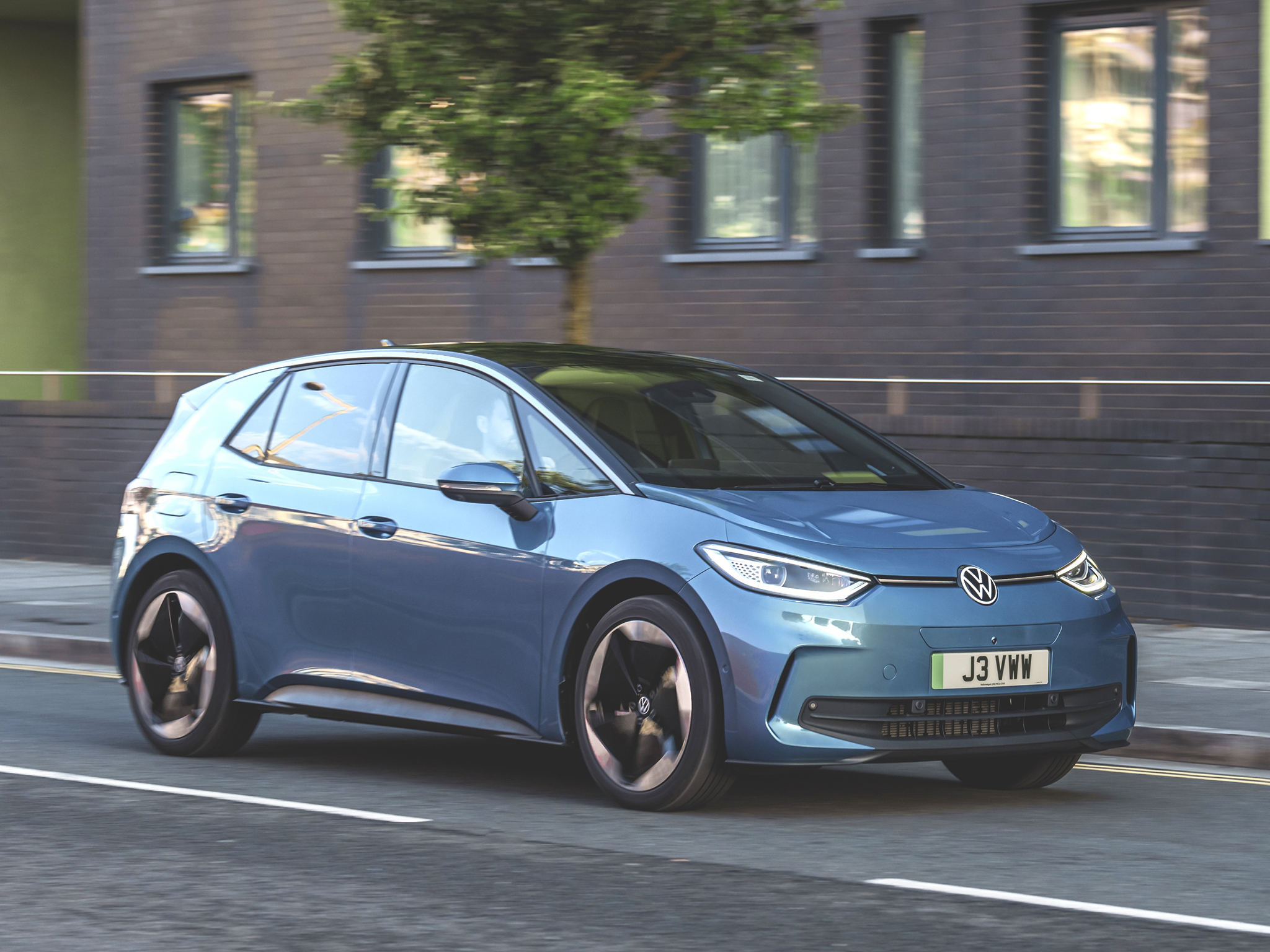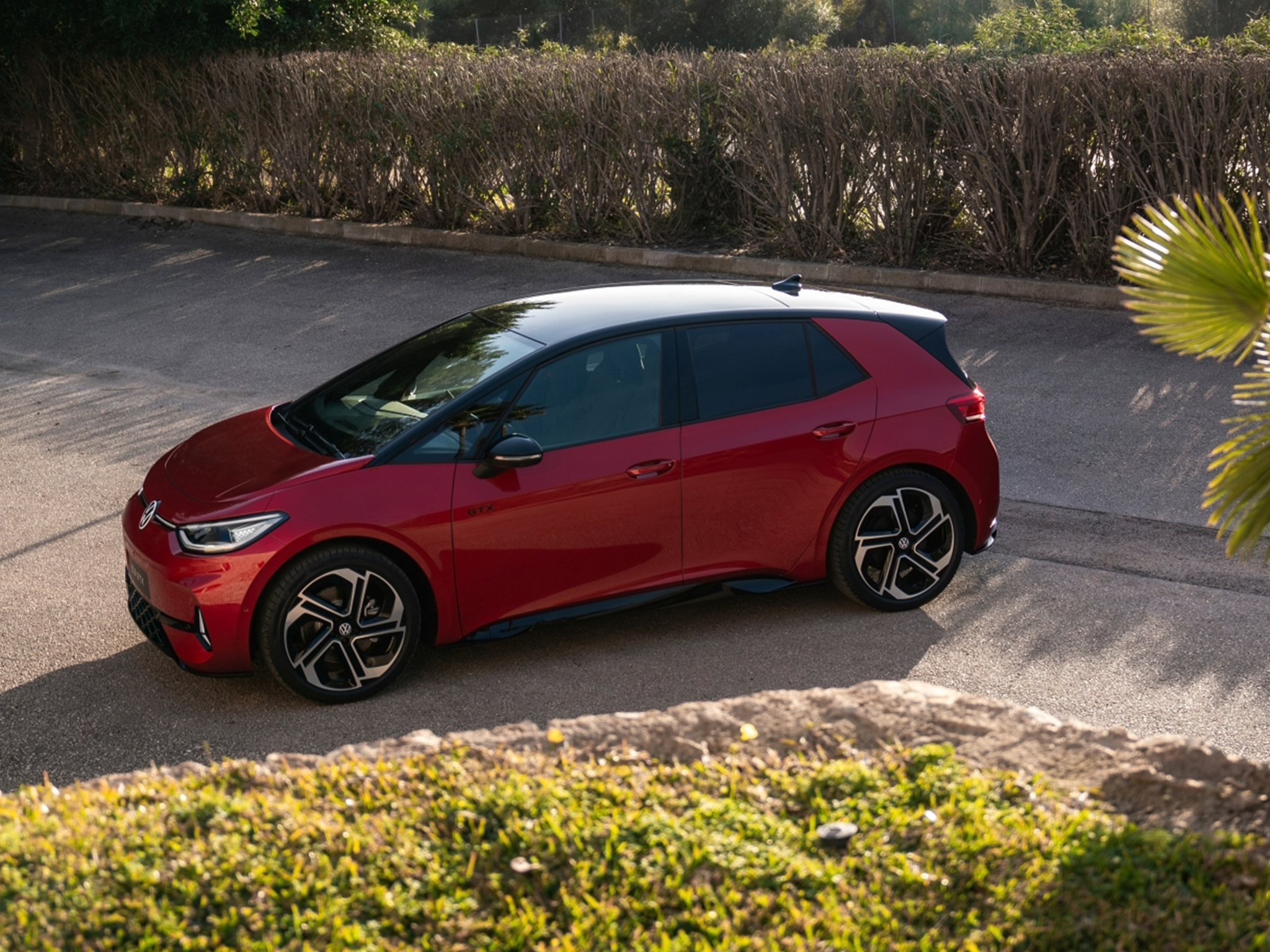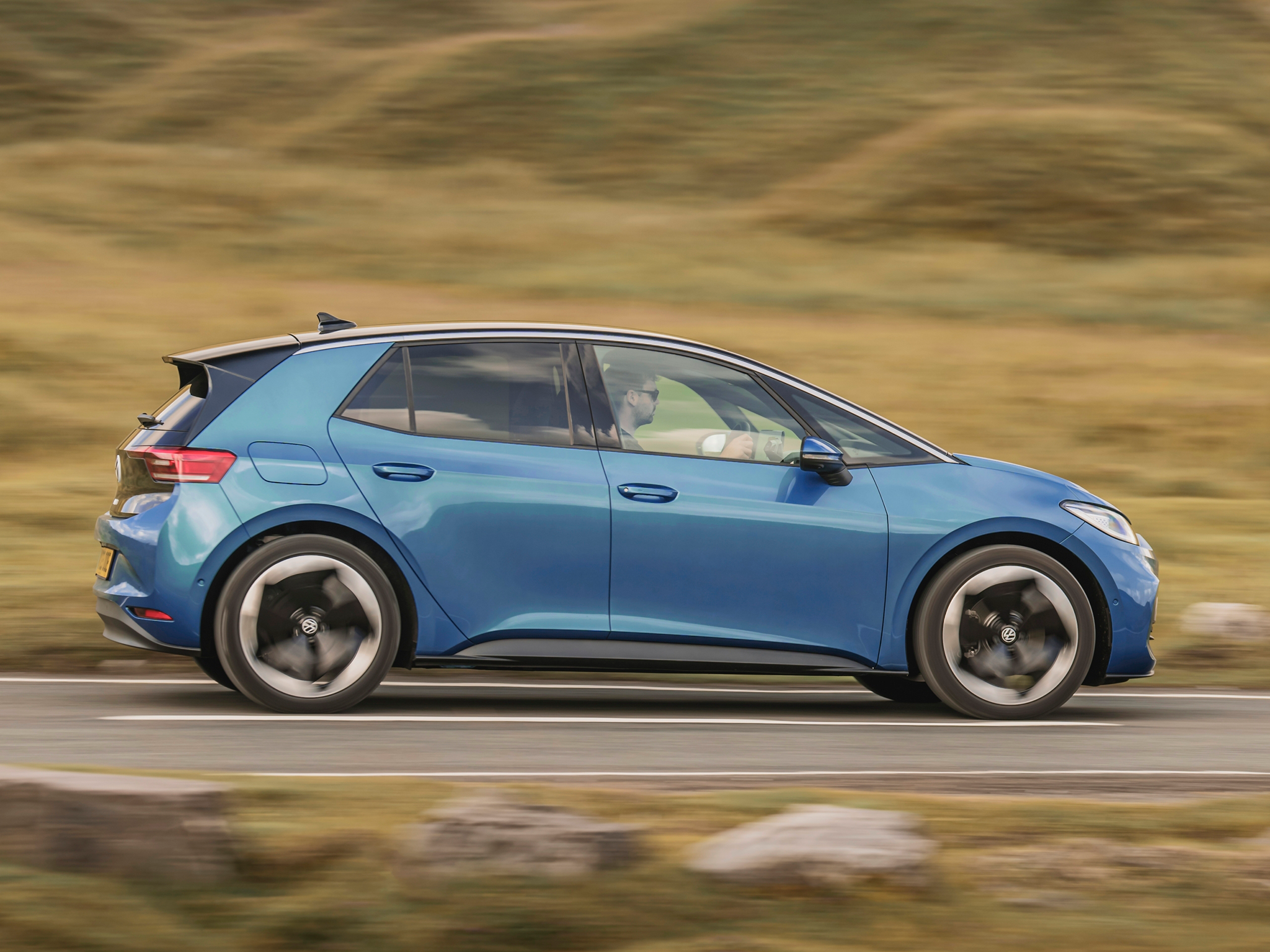Volkswagen ID.3 review: Decent range, efficiency and charge speed
Volkswagen’s first bespoke electric car carries a lot of weight on its shoulders. It delivers with a refined ride, spacious cabin and decent range, but the infotainment falls short

The Independent's Electric Vehicles Channel is sponsored by E.ON Next.
Despite Volkswagen’s lofty ambition when it arrived in 2019, the ID.3 isn’t yet an EV to replace the Golf. That said, the 2023 facelift and 2024 infotainment upgrade go some way to addressing the concerns we had with the original car. The ID.3 benefits from a refined ride and relatively spacious interior, while promising decent range, efficiency and charge speed.
It also comes with a good amount of kit as standard, and its exterior design was subtly improved with the mid-life facelift. But the ID.3 lives in a competitive sector of the EV market, where better value is offered by MG, and better tech – as well as a world-class charging network – is available from Tesla.
How we tested
I used the ID.3 as my daily driver for several days. The car was used for errands around London, as well as a longer journey away over a weekend that included A roads and motorway.
Volkswagen ID.3: From £35,700, Volkswagen.co.uk

Independent rating: 7/10
- Pros: Refined ride, roomy interior, good efficiency
- Cons: Infotainment could be better, ;arger battery model loses fifth seat, sub-par sound system
- Price range: £35,700 to £40,050
- Battery size: 59 kWh or 77 kWh
- Maximum claimed range: 268 to 346 miles
- Miles per kWh: Up to 4.06
- Maximum charging rate: Up to 170 kW
- Charging cost per 100 miles on E.ON Next Drive: £1.65
Battery, range, charging, performance and drive
There are four models of Volkswagen ID.3. The first two are fitted with a 59 kWh battery and have a range of up to 269 miles, while a slightly more expensive duo use a 77 kWh battery and have a range of up to 346 miles. Those with the smaller, lighter batteries accelerate slightly more quickly and have a 0-62 mph time of 7.6 seconds, compared to 8.2 for the bigger battery.
All four models can be filled from 10 to 80 percent in about 30 minutes, but the larger pack has a higher maximum rate of 170 kW, compared to 120 kW for the smaller model. An overnight charge at home from a 7.4 kW wall box will take between around nine and 12 hours, depending on which battery capacity you buy.
The ID.3 isn’t a particularly sporty car, but it rides well and the motor is especially quiet, adding to the overall refinement. There are two options of regenerative braking; one automatically adjusts based on your surroundings, while the other gradually slows the car to walking pace when you lift off. The ID.3 lacks a true one-pedal drive mode.
Interior, practicality and boot space
The ID.3 has a spacious interior with a minimalistic design but plenty of convenient storage. We like how the door pockets are lined to stop their contents rattling about, and there’s a good amount of space in the second row, plus a completely flat floor. However, only the smaller battery cars have three seats in the back; this is cut to two if you go for the larger battery. Thankfully, there are three ISOFIX child seat mounting points in both configurations.
Volkswagen improved the ID.3’s interior materials with a facelift that arrived in 2023. The cheap plastics of the original ID.3 are now mostly gone, but the car still has a frustrating set of touch-sensitive controls for the lights, stereo volume and cabin temperature.
At 385 litres the ID.3’s boot is decent enough, but is noticeably smaller than that of the Kia Niro EV. There’s no ‘frunk’ storage under the bonnet, but a false floor in the boot means your charge cables can be stored there instead.

Technology, stereo and infotainment
The 2023 facelift improved some aspects of the ID.3’s fiddly and needlessly complicated infotainment system, but it still isn’t as responsive as we’d like. A set of touch-sensitive temperature controls sit below the display, but they are too easy to tap by accident while using the screen, and bizarrely they are not illuminated, so are difficult to see at night. The same goes for the music volume control. Thankfully, these issues are to be addressed by a new, 12.9-inch infotainment screen fitted to cars ordered in mid-2024 onwards.
You can side-step most of the ID.3’s frustrations by using Apple CarPlay or Android Auto, which are both fitted as standard. Pricier Pro models also get a wireless phone charger, but there’s no option to upgrade the ID.3’s sound system, which has just four speakers in total and none of which are in the rear of the cabin.
The 5.3-inch driver display remains the same as before, with key information like speed, range and battery charge. Every model of ID.3 has four USB-C charge ports.
Prices and running costs
There’s only a £5,000 difference between the cheapest and most expensive version of ID.3, before adding optional extras. Those looking for a quicker and slightly sporter should consider the smaller, lighter battery, and should then spend the extra £860 on the Match trim upgrade, which adds alloy wheels, LED Matrix headlights, ambient lighting, tinted rear glass, integrated navigation, keyless entry wireless phone charging and two-zone climate control. It’s a nice suite of extras for relatively little money.
Drivers looking for an extra 75-or-so miles of range will want the bigger battery of the Pro S variant, and again we recommend paying an extra £860 for the upgraded kit of the Match trim level.
As ever, running costs depend on how the car is driven and charged. High-speed chargers in convenient locations like motorway service stations are expensive, while plugging in for a slower overnight charge at home costs significantly less.

Volkswagen ID.3 rivals
FAQs
How long does it take to charge?
Although their maximum charge rate varies slightly (120 kW vs 170 kW), both the 59 kWh and 77 kWh battery size options take about 30 minutes to fill from 10 to 80 percent. Plug into a wallbox charger at home, and the ID.3 takes between nine and 12 hours to fully charge from almost empty.
How much does it cost - is it worth it?
The ID.3 starts at £35,700 for the Pro Essential model, but we recommend spending slightly more for the Pro Match. This adds alloy wheels, improved headlights, a navigation system that helps you find chargers, two-zone climate control, keyless go and a wireless phone charger. In a world where some manufacturers like to charge hamsonly for extras, this feels like decent value. That said, the MG4 EV is a cheaper car, starting at around £27,000.
Does Volkswagen replace batteries for free?
Every all-electric car sold by Volkswagen comes with a battery warranty that lasts for up to eight years or 100,000 miles, whichever comes first. If the battery capacity falls below 70 percent during that time, your vehicle may be eligible for a free repair.
The verdict: Volkswagen ID.3
Arriving in 2023, the facelifted ID.3 rights some wrongs of the original, and the latest infotainment display, new for mid-2024, is another welcome upgrade. VW’s first bespoke EV is nice to drive, with decent range and charging speed.






Join our commenting forum
Join thought-provoking conversations, follow other Independent readers and see their replies
Comments